"Stacks, Readers, Staff" - Building the British Library
I was at a fascinating British Library event last week called "A building for now and the future: the British Library after 10 years". It was a look back at the torturous process by which the new building came to be built. In fact, prior to this government's woeful recent IT record, building the British Library was the text-book example of how not to run a public sector procurement project.
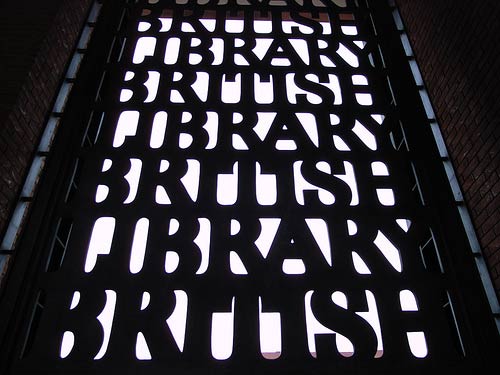
Photo courtesy of stevecadman
Architect Sir Colin St. John 'Sandy' Wilson used to refer to the project that took up the bulk of his professional career as 'the thirty years war'. There was no overall budget, and so from year to year, the architects never knew how much was going to be available for construction. That meant a constant process of re-design and re-assesment of priorities, as the eventual shape and size of the building always seemed to be in flux.
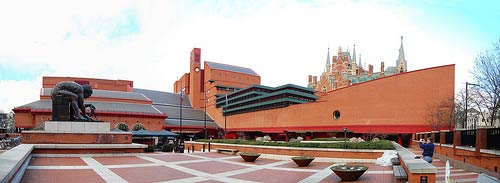
Photo courtesy of Istvan
Dame Lynne Brindley, the library's Chief Executive, spoke of how the chorus of almost universal disapproval of the new building fell away to silence almost as soon as it was open. Now it is genuinely loved.
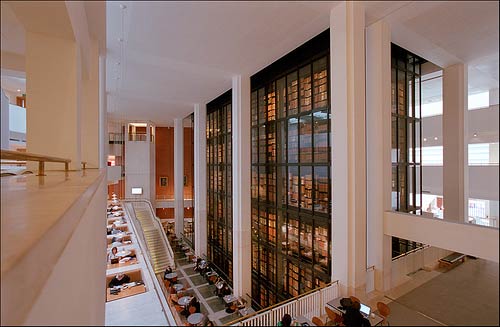
Photo courtesy of Xavier de Jauréguiberry
Sadly, 'Sandy' died in 2007, but his wife and architectural partner M J Long evoked memories of the entire process, and conveyed a great sense of his personality in her presentation.
It was a real insight into what had been a user-centred design process. They had ignored some conventional 1960s wisdom about how to build libraries, in favour of really thinking about the needs of, as she put it: "Stacks, readers, staff".
They invested a great deal of time in modeling how light would reach the desks in the reading rooms, providing a comfortable environment to work, without exposing the precious pages of the collection to direct sunlight.
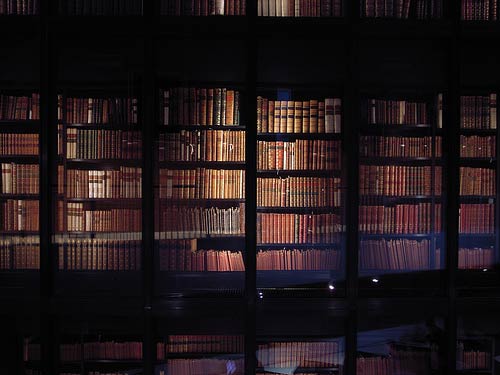
Photo courtesy of stevecadman
The building was also specifically shaped around the surroundings. They were desperate not to overshadow what MJ called 'the wonderful confection' of St Pancras. The British Library is therefore deliberately low at the front, so as not to obscure views of the building from the Euston Road.
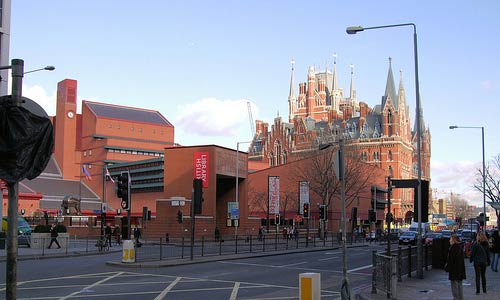
Photo courtesy of Jim Linwood
It is also made with materials and colours that compliment the neighbouring building, rather than contrasting with it, using bricks made from the same clay pit.
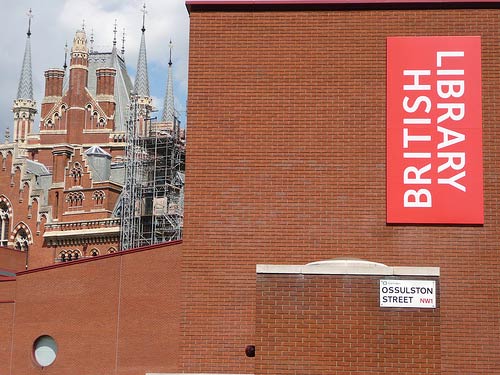
Photo courtesy of Kill Pop
The British Library was only fully formed in 1973, and prior to that bits of it had belonged to the British Museum. The original plan to build a new home for it involved, according to M J Long, 'destroying Bloomsbury'. That location presented the physical challenge of having a single long facade, which would mean building in one phase, and shifting loads of residents. By contrast, when the site at Kings Cross was proposed and purchased, the only thing that needed to be shifted from the decaying goods yard were some 'potatoes and railroad tracks'
In the Q&A, someone asked if she had any regrets about the process, and MJ made everyone laugh. She pointed out that it had been really great to be able to spend so long on all the little details of how a building operated, and to design different door-handles for staff, readers and the outside world, but surely they could have done it in less than 37 years.
The project had been a political football for many years, taking money from the nation's arts budget, and inviting all sorts of criticism. Prince Charles denounced the reading room as looking like "the assembly hall of an academy for secret police". Asked about the delays in opening it, David Mellor, then in Government, simply said it was "because the architect is no good".

Photo courtesy of Phil Of Photos
It is very easy to take the library for granted, especially now it forms part of what was called 'a new intellectual quarter' of London which includes The Wellcome Trust and the Kings Place arts centre which now houses The Guardian. When it opened, however, it was more of an isolated cultural oasis.
Next...
It was a really great evening event at the library, and over the next couple of days I'll be posting some more thoughts on the specific mentions of the implications of technology in the design, and some of the comments about the newspapers in the library's collection.
Commuting via Kings Cross I always enjoy walking via the library - thankfully this article might actually inspire me to take some time to go inside, rather than rushing home thinking I should find the time at a later date...